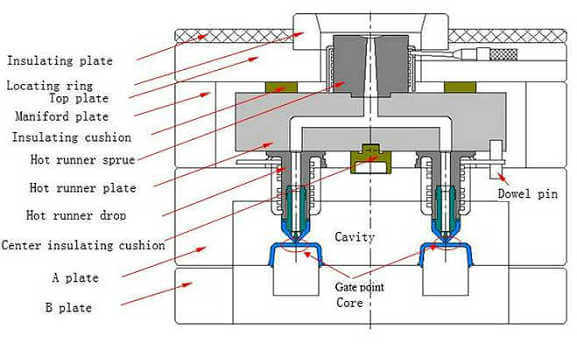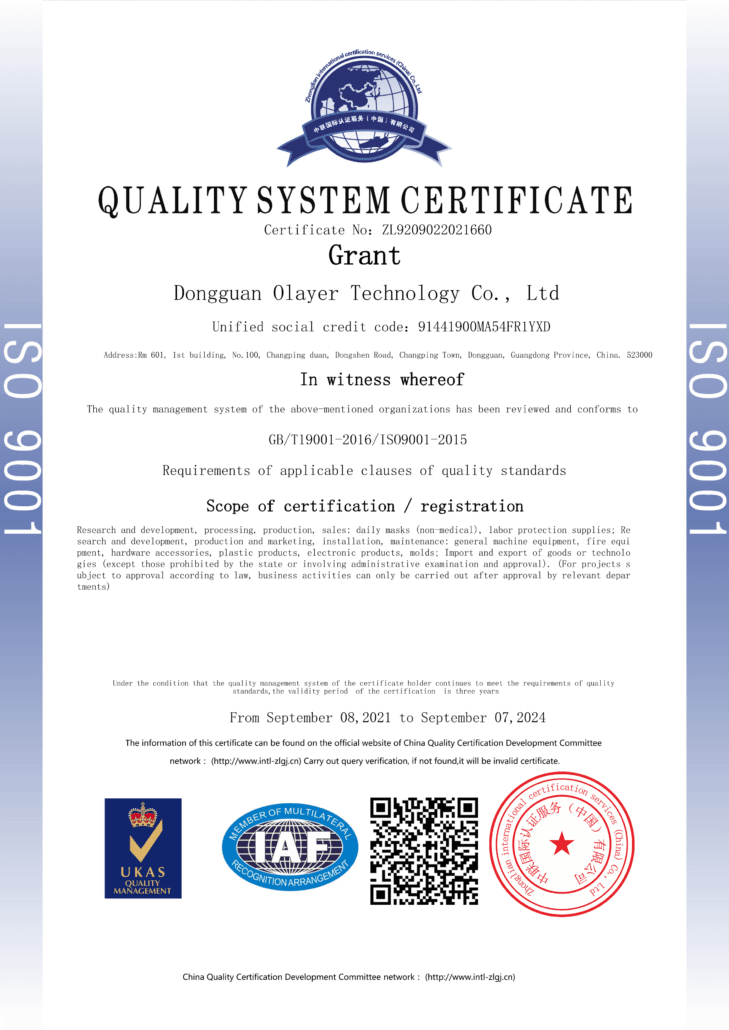Enhancing Injection Molding Efficiency with Hot Runners: A Comprehensive Guide
In the realm of injection molding, precision and efficiency are paramount. Manufacturers are continually seeking ways to optimize their processes and deliver high-quality products. One technology that has revolutionized injection molding is hot runners. These sophisticated systems play a vital role in enhancing the efficiency, part quality, and design flexibility of injection molds. In this comprehensive guide, we will delve into the world of hot runners, exploring their components, advantages, selection considerations, troubleshooting techniques, recent developments, and future prospects.
I. Introduction to Hot Runners in Injection Molds
Hot runners are integral components of injection molds that help facilitate the flow of molten plastic material into the cavities. Unlike conventional cold runner systems, hot runners maintain a consistent temperature throughout the injection molding process, ensuring precise and efficient filling. By eliminating the need for runners to be cooled and subsequently discarded, hot runners contribute to reduced cycle times and material waste.
II. Components of Hot Runners
A. Nozzles
Nozzles are critical components of hot runners, responsible for channeling the molten plastic material into the mold cavities. They come in various types, including valve gate, open gate, and hot sprue nozzles. The selection of a suitable nozzle depends on factors such as the type of plastic, injection pressure requirements, and gate aesthetics. Nozzles are constructed using materials that can withstand high temperatures and offer excellent thermal conductivity, such as stainless steel or bronze.
B. Manifolds
Manifolds are the central distribution channels within hot runner systems. They distribute the molten plastic from the nozzle to individual cavities in the mold. Manifold systems can be designed as a single-piece manifold or as a modular system with multiple sections. Factors like the number of cavities, part complexity, and space constraints influence the selection of the appropriate manifold type. Efficient manifold design ensures balanced flow and optimal filling patterns, resulting in high-quality molded parts.
C. Heaters and Temperature Controllers
Hot runner systems rely on heaters to maintain a consistent and precise temperature throughout the injection molding process. Heaters are positioned along the hot runner components to ensure that the plastic material remains molten and flowable. Temperature controllers play a crucial role in monitoring and adjusting the heater output to achieve the desired temperature. Advanced temperature controllers offer features such as PID control algorithms, multi-zone temperature control, and real-time monitoring, allowing for precise temperature regulation.
III. Advantages of Hot Runners
A. Improved Efficiency
Hot runners contribute significantly to enhancing the overall efficiency of injection molding processes. By eliminating the need for runners to be cooled and subsequently ejected, cycle times are reduced, leading to increased productivity. Additionally, the elimination of runner waste reduces material consumption, resulting in cost savings and improved sustainability.
B. Enhanced Part Quality
The use of hot runners can greatly improve the quality of molded parts. By maintaining a consistent temperature, hot runners help eliminate flow lines and weld lines, which are common defects in injection molding. The precise control over gate temperature and flow enables improved gate aesthetics, leading to visually appealing finished products.
C. Increased Design Freedom
Hot runner systems provide designers with greater flexibility in creating complex part geometries. With cold runners, certain design constraints exist due to the need for runner removal. Hot runners eliminate these constraints, allowing for more intricate and challenging part designs. The ability to achieve precise and controlled filling patterns enables the production of parts with thin walls, intricate details, and challenging geometries.
D. Cost Savings
Implementing hot runner systems can result in significant cost savings for manufacturers. The reduction in material waste translates into direct cost savings. Moreover, the elimination of runner removal and associated labor-intensive processes leads to reduced labor costs. Additionally, the energy-efficient designs of modern hot runner systems contribute to lower energy consumption, further reducing operational costs.
IV. Considerations for Hot Runner Selection
When selecting a hot runner system, several key factors should be considered to ensure optimal performance and compatibility with the injection molding process.
A. Material Compatibility
Different plastic resins have varying temperature requirements and behaviors during the injection molding process. It is crucial to match the hot runner materials with the specific resin type being used. Compatibility issues can result in material degradation, contamination, or other processing difficulties. Manufacturers should work closely with hot runner suppliers to select materials that offer excellent chemical resistance, thermal stability, and durability for the specific resin being processed.
B. Process Requirements
The desired production volume, number of cavities, and part complexity play a vital role in determining the appropriate hot runner system. Manufacturers need to consider factors such as mold size, gating options, and the desired balance of flow across multiple cavities. Balancing flow and optimizing filling patterns are essential to achieve consistent part quality and dimensional accuracy. Simulation tools can assist in analyzing and optimizing the hot runner system design for efficient flow distribution.
C. Maintenance and Support
Efficient maintenance and support are crucial for the long-term performance of hot runner systems. Regular cleaning and preventive maintenance ensure optimal operation and prevent issues such as clogging or degradation of hot runner components. It is essential to select a hot runner supplier that offers comprehensive technical support, readily available spare parts, and a robust maintenance program. Timely assistance and troubleshooting support can minimize downtime and maximize productivity.
V. Common Challenges and Troubleshooting
While hot runner systems offer numerous benefits, certain challenges may arise during operation. Understanding these challenges and implementing effective troubleshooting techniques is key to maintaining optimal performance.
A. Flow Imbalances and Molding Defects
Flow imbalances can occur due to variations in runner lengths, gate sizes, or temperature inconsistencies. These imbalances can lead to issues such as short shots, sink marks, or uneven filling. Troubleshooting techniques involve analyzing and adjusting the temperature settings, gate designs, or manifold configurations to achieve balanced flow and mitigate molding defects.
B. Maintenance and Repair
Regular maintenance is crucial to prevent issues such as nozzle clogging, heater malfunctions, or temperature control inaccuracies. Proper cleaning procedures, including purging and flushing, should be implemented to remove any residue or contamination from the hot runner system. If issues arise, troubleshooting the heaters and temperature controllers may involve checking electrical connections, replacing faulty components, or recalibrating temperature settings.
VI. Recent Developments and Trends in Hot Runners
The field of hot runners continues to evolve, incorporating advanced technologies and addressing emerging industry trends.
A. Advancements in Hot Runner Technology
Smart and self-regulating hot runner systems are gaining traction in the industry. These systems utilize sensors and advanced control algorithms to continuously monitor and adjust temperature, flow, and pressure parameters in real-time. This level of automation and intelligence improves process control, reduces manual intervention, and enhances overall productivity. Furthermore, integration with Industry 4.0 concepts enables data-driven decision-making, remote monitoring, and predictive maintenance.
B. Sustainability and Eco-Friendly Solutions
The focus on sustainability in manufacturing processes has driven the development of energy-efficient hot runner designs. These designs minimize heat loss, optimize power consumption, and reduce the carbon footprint associated with injection molding operations. Additionally, initiatives to enhance recyclability and reduce waste are gaining prominence, with hot runner systems being designed for easier disassembly and recyclability of components.
At Sincere Tech, we are dedicated to maintaining our position as a leading plastic mold company by embracing industry advancements and anticipating future trends. We actively explore innovative materials and composites that offer improved performance and sustainability. Through ongoing investments in research and development, we deliver cutting-edge solutions that address the evolving needs of our customers. As one of the best injection mold suppliers in China, we pride ourselves on our commitment to excellence.
In line with our commitment to sustainability, we prioritize environmentally friendly practices. We proactively seek sustainable alternatives, such as biodegradable polymers, and implement recycling initiatives to minimize the environmental impact of our manufacturing processes. By choosing our custom injection molding services, you can align your brand with sustainable manufacturing practices and contribute to a greener future.
Quality is of the utmost importance to us, and we maintain stringent quality control measures throughout the entire manufacturing process. Our state-of-the-art facilities and skilled technicians ensure that each product undergoes rigorous inspection and testing, guaranteeing exceptional performance, reliability, and customer satisfaction.
When you partner with Sincere Tech as your preferred China mold maker, you can expect the highest level of professionalism, expertise, and innovation. We are dedicated to helping you bring your ideas to life, delivering superior products that excel in performance, durability, and cost-effectiveness.
Our expanded capabilities include:
- Rapid Prototyping: We offer rapid prototyping services to quickly transform your concepts into tangible prototypes, allowing for iterative design improvements and accelerated product development.
- Precision Tooling: Our advanced tooling capabilities enable us to create high-quality molds with tight tolerances, ensuring consistency and precision in your injection-molded products.
- Overmolding: We specialize in overmolding, which allows for the combination of multiple materials or components, resulting in enhanced functionality, aesthetics, and durability.
- Insert Molding: Our expertise in insert molding enables us to securely encapsulate inserts within the molded parts, facilitating efficient assembly and enhancing product performance.
- Two-Shot Molding: With two-shot molding, we can produce complex, multi-material components in a single operation, reducing assembly requirements and enhancing design possibilities.
- Value-Added Services: In addition to injection molding, we offer a range of value-added services, including product assembly, packaging, and logistics support, streamlining your supply chain and reducing costs.
Partner with Sincere Tech Mould suppliers for your custom injection molding needs, and benefit from our comprehensive capabilities, unwavering commitment to quality and sustainability, and our drive to exceed your expectations at every step of the process. Together, let’s bring your innovative ideas to life.
VII. Conclusion
Hot runners have revolutionized the injection molding industry, enabling enhanced efficiency, improved part quality, and increased design freedom. By understanding the components, advantages, selection considerations, and troubleshooting techniques related to hot runners, manufacturers can make informed decisions to optimize their injection molding processes. Recent developments and trends, such as smart technology integration


